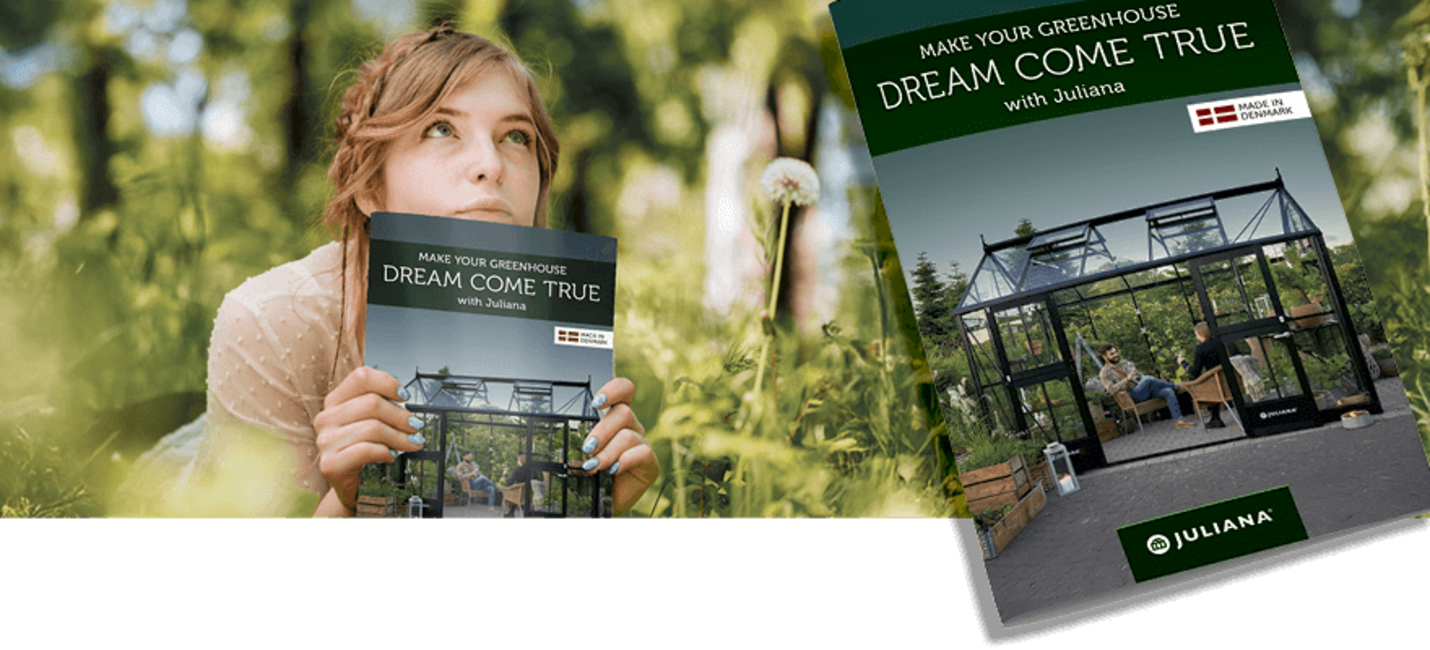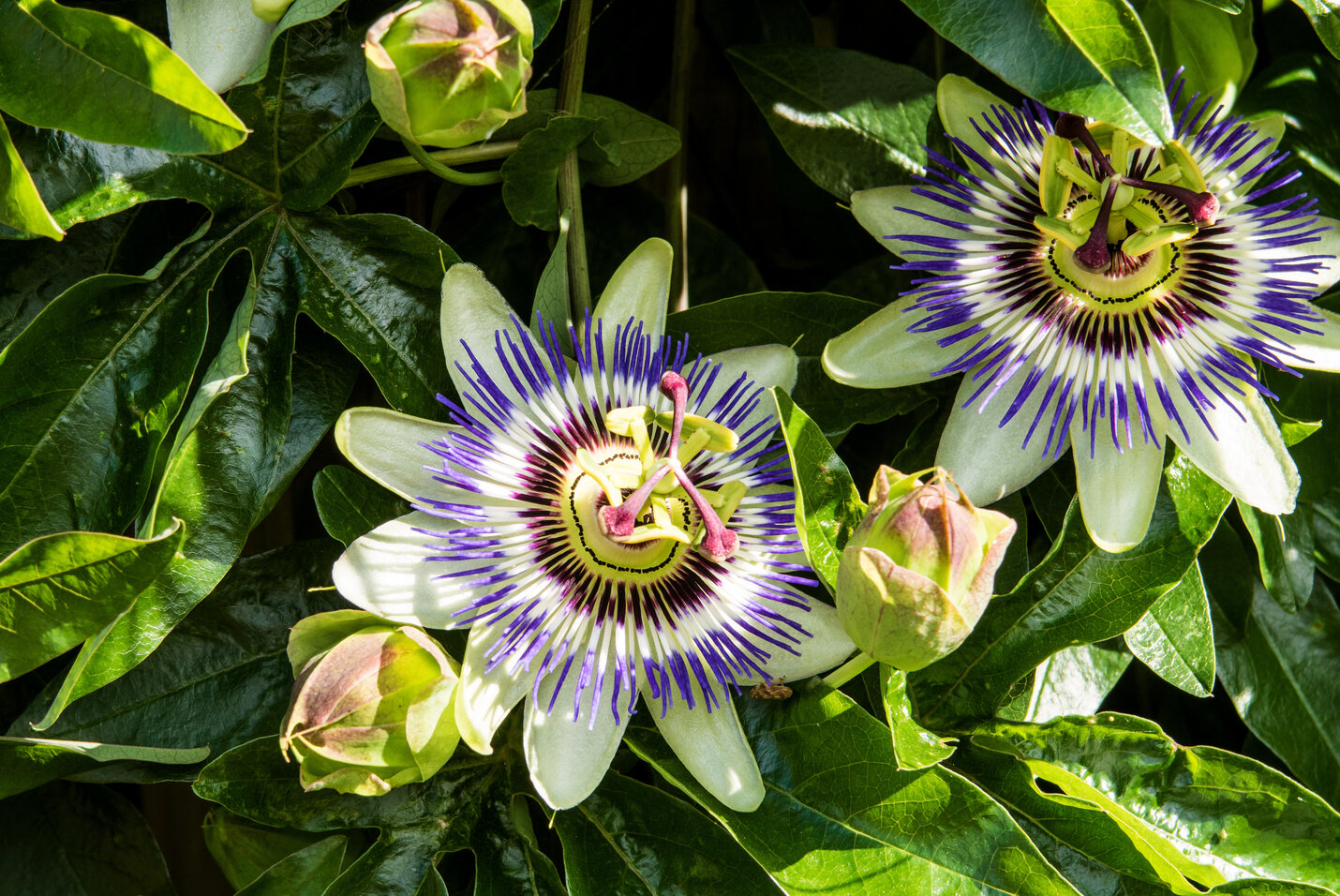Written by Spirekassen 10 Apr 2024 10:35
The Greenhouse as a Sensory Space
Text & photo: Christine Wiemann, Spirekassen
Throughout the more than 50 years hobby greenhouses have been on the market in Europe, the greenhouse has undergone a huge transformation. In the early 1970s, when the first hobby greenhouses appeared on the market, the greenhouses were small and built for one function, namely that plants could be grown in them.
Times have changed, and so has the hobby greenhouse. The greenhouses have become larger, and many models resemble small orangeries inspired by England's beautiful garden traditions and the classic beauty of Kew Gardens.
The way of using the greenhouse has also changed. In fact, our way of using the hobby greenhouse differs depending on which country you come from. The Germans and the English predominantly use their greenhouses traditionally with a focus on plant cultivation. In Denmark, there is a tendency to use a greenhouse as a "living house" with a focus on the greenhouse as a living space and less focus on plant cultivation.
At Spirekassen, we have two greenhouses. An older orangery of 25 m2, which is used for classic cultivation of a variety of vegetables. We also own a new Juliana Orangery 21.5 m2, which is located by our lake. It is consciously used as a sensory space, which stimulates our senses while also creating mental peace.
We have vulnerable people interning with us all year round. They may be people with stress, anxiety, or depression. Some suffer from all of these at the same time. Here, we use our orangery consciously as a sensory space, relaxation room, meeting room, and much more. The common denominator is that the stay in the greenhouse should be a good and peaceful experience.
Elements in the Greenhouse as a Sensory Space
Sense of Nature
We know that spending time in nature can be an effective way to reduce stress and promote general well-being. Nature, represented here by the greenhouse, gives us a unique opportunity to be present in the moment and practice mindfulness. The sound of birds, the rustle of trees, and the sight of plants growing, blooming, and displaying different colors can all help calm the mind and reduce stress. When we experience stress, it often stems from being overstimulated in everyday life. If you consciously use the greenhouse as a sensory space, you can often create an environment with fewer stimuli, giving the mind a break from the constant bombardment of screens, traffic, noise, and everyday life. Humans have an innate connection to nature. By spending time in nature, we can reconnect with this bond and promote a sense of calm and well-being in the body.
Plant Selection for the Sensory Greenhouse.
Consciously work on selecting plants with different textures and colors to create visual stimulation. Also, consider plants with interesting shapes or growth habits. Spirekassen's focus this year is on shapes, colors, and lushness to create a sensory greenhouse. Our plant selection includes unusual eggplants with fruits the size of a hen's egg. Especially an exciting Egyptian eggplant with vibrant orange fruits. We are also trying out 'Purple' Tomatillos. The plant selection aims to create a visual experience.
To add a lush element, we have chosen Passiflora caerulea, passionflower. This species has vigorous and climbing growth, and you can almost see it growing day by day. It creates a tropical atmosphere in the greenhouse, combined with our fig trees. Fig trees have the finest scent and aroma of fig when you touch the leaves and stems. Fragrant plants, in general, are also a "Must Have" in the sensory greenhouse. We have herbs such as rosemary and scented geraniums, which release essential oils through the leaves.
To enhance the tropical ambiance even further, this year we have also chosen to fill our orangery with tropical houseplants.
Sound Elements.
We have many natural sounds from the lake nearby, as well as from the surrounding nature. Additionally, we have a wind chime with gentle sounds, providing a soothing acoustic background. The sound of the water in the lake moving combined with the delicate wind chime contributes to a relaxing atmosphere.
Tactile Experience.
The word tactile is derived from the Latin word tactilis, meaning 'to touch.' Tactile sensation includes any sensation that describes something that can be perceived through touch.
The tactile experience can be created by comfortable furnishings and the right shade in the greenhouse, so the greenhouse climate becomes pleasant. Thus, the greenhouse becomes a natural place to stay. We have a large table where everyone can sit and enjoy the view of the lake or feel the lushness, colors, shapes, and scents of the greenhouse. Plants can be touched, and several plants emit natural aromatic substances.
Lighting.
Use natural sunlight as a starting point, but also remember to provide good shading options in the greenhouse. Also, consider installing subdued lighting for evening use. We are very fond of Juliana Greenhouses' solar lamp and tea light holder.
The lighting is soft and harmonious and is perfect for the semi-bright summer evening. Remember that exposure to natural light during the day can help regulate sleep patterns and mood in a positive direction, which in turn can reduce underlying stress.





